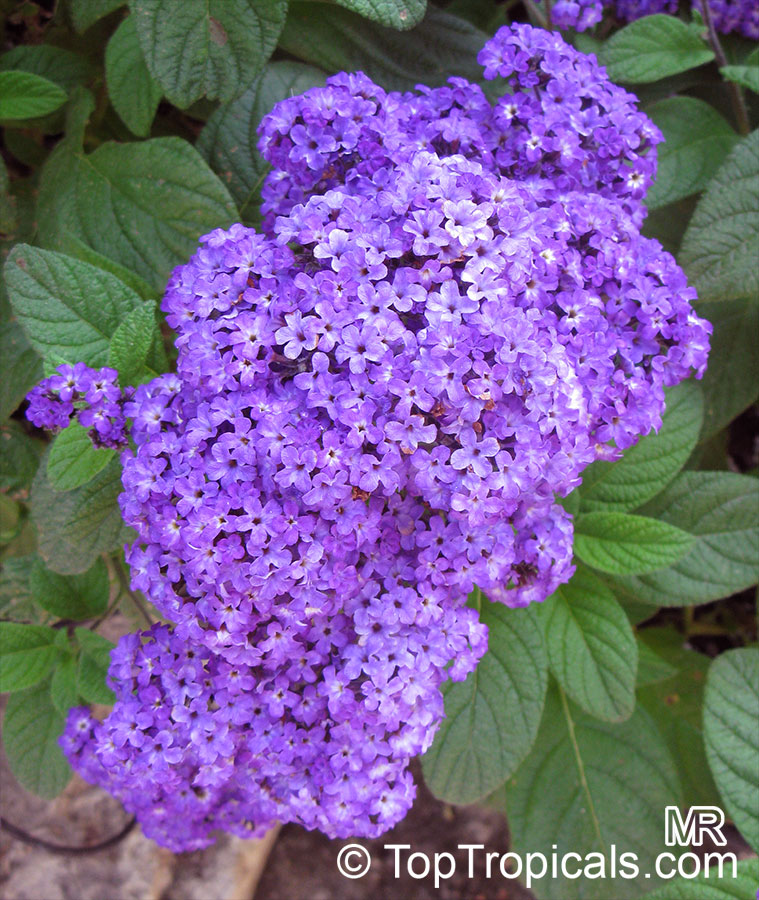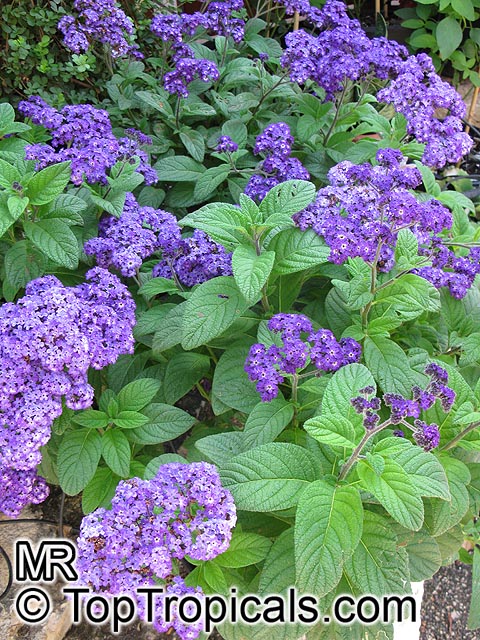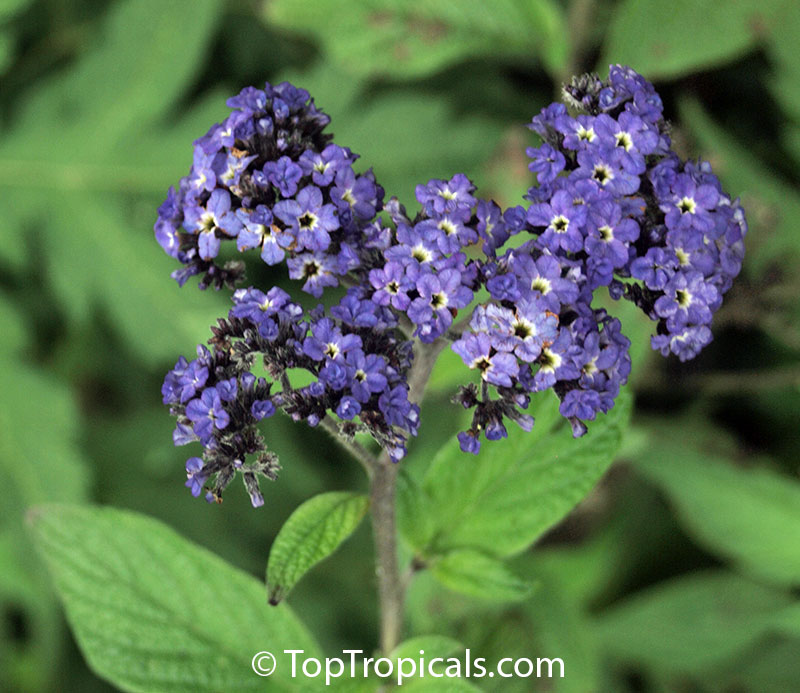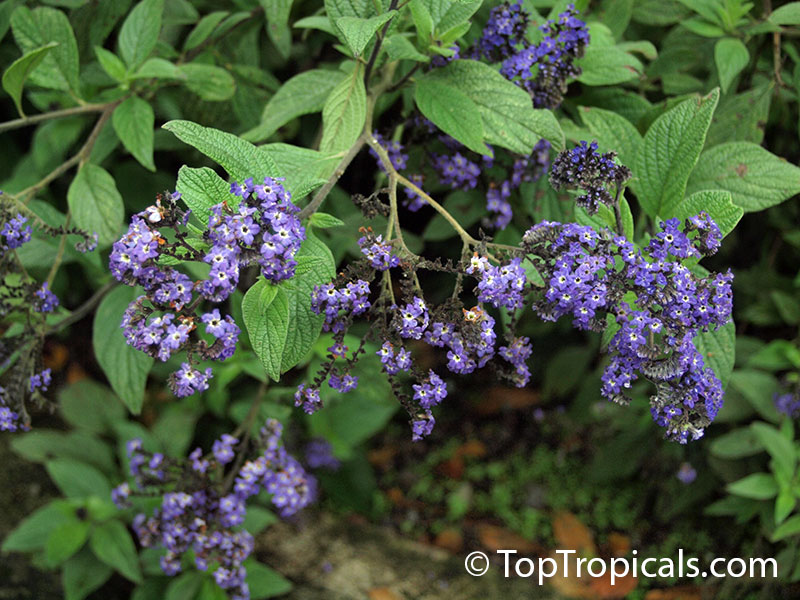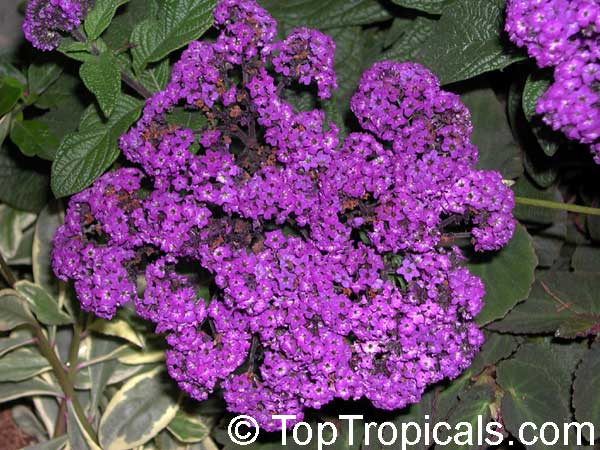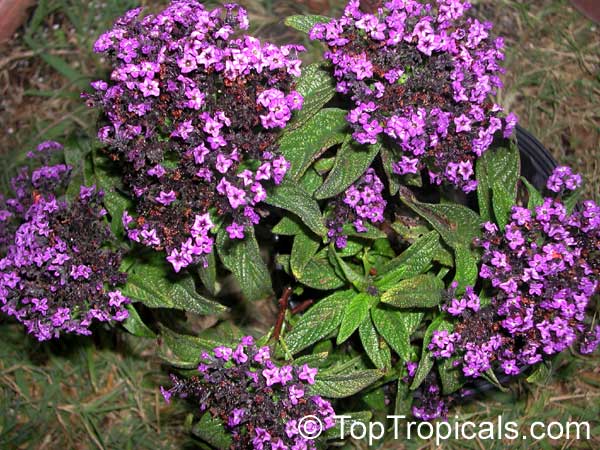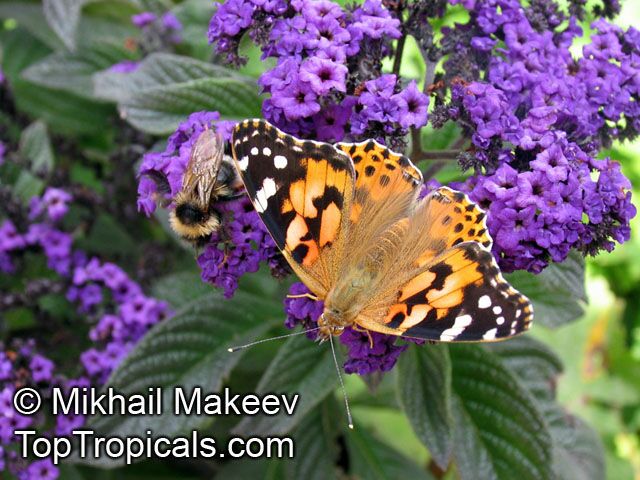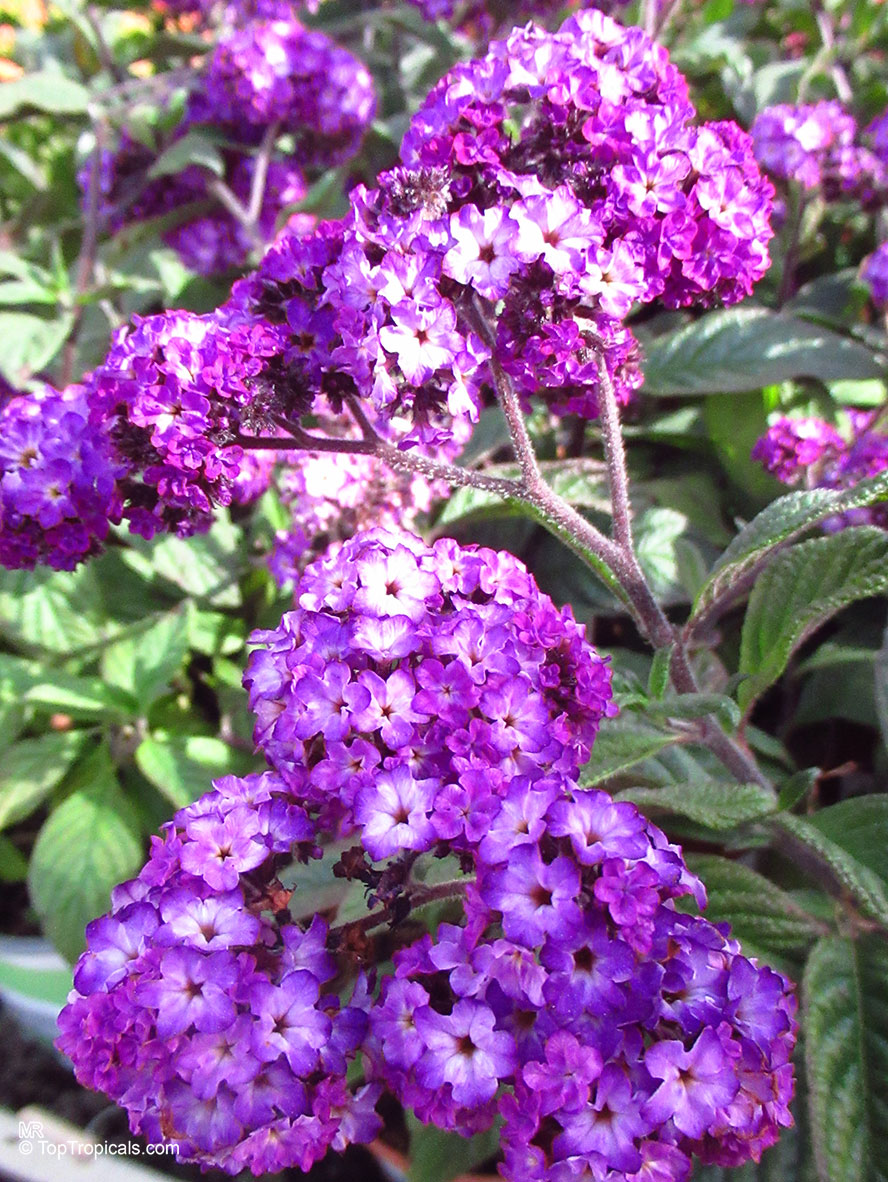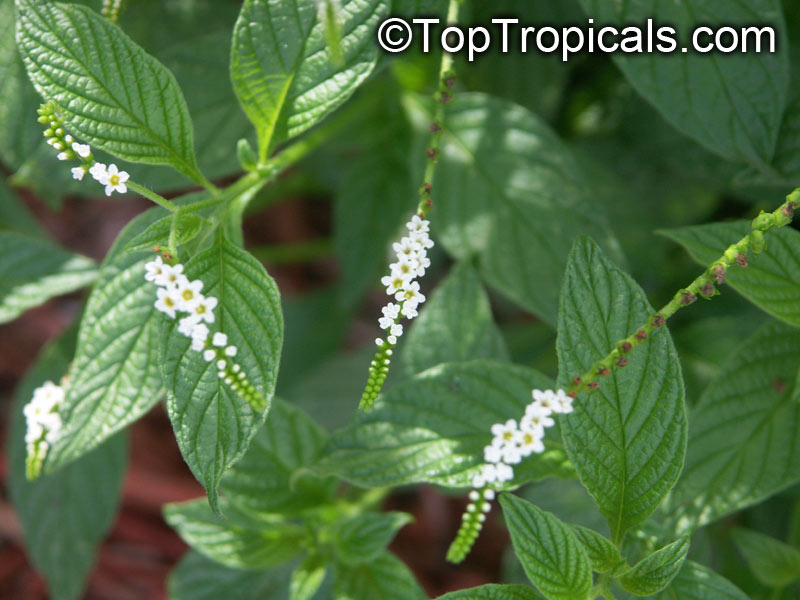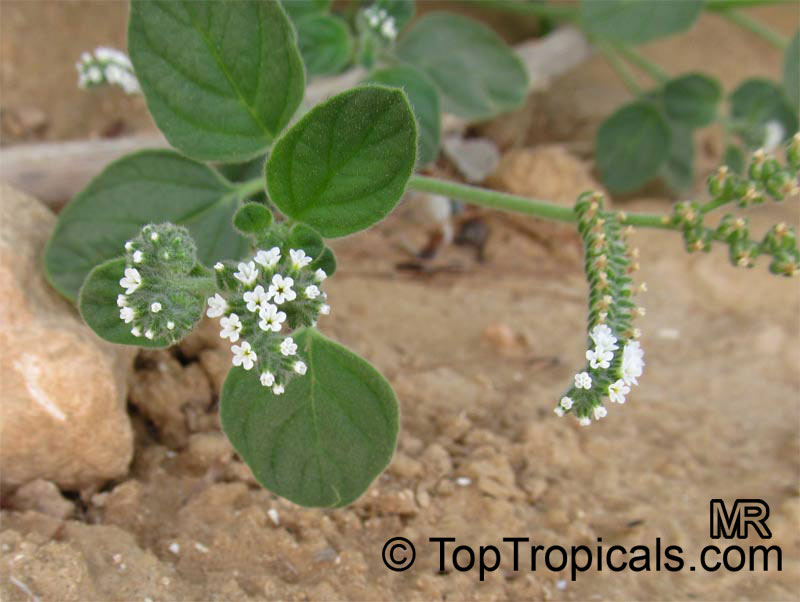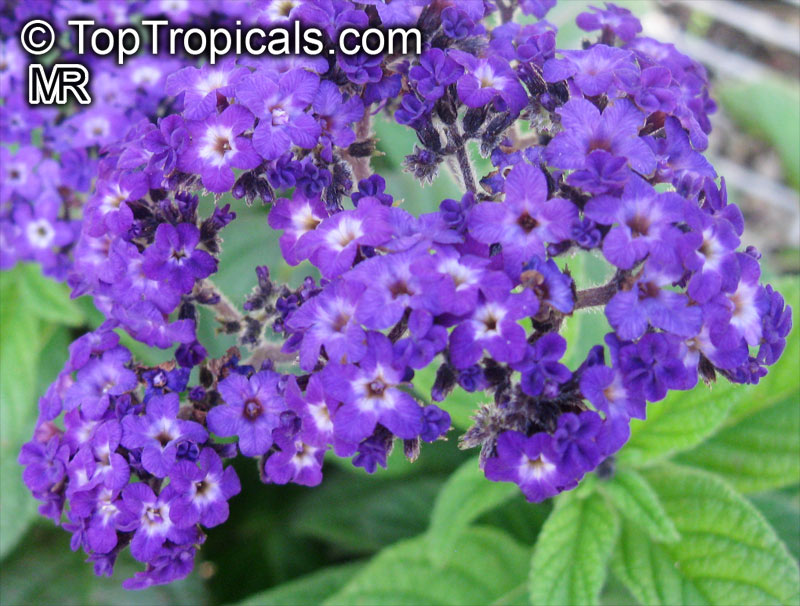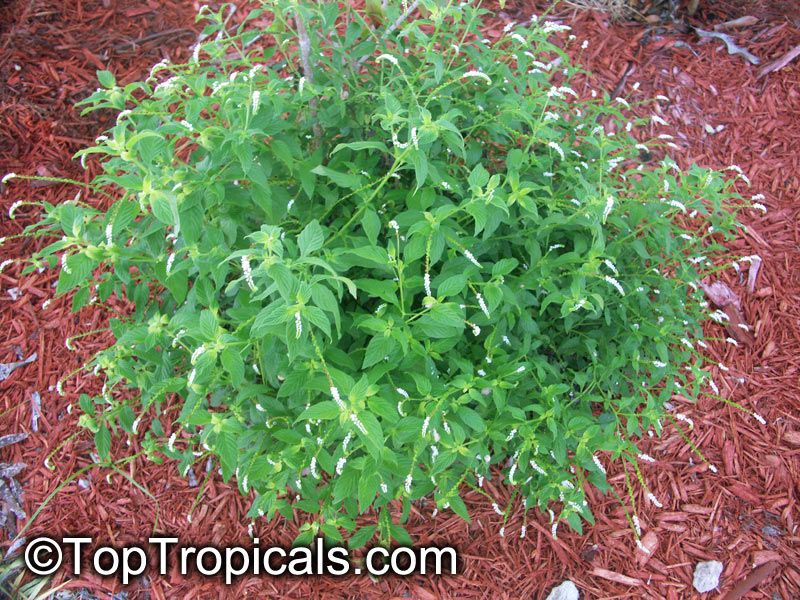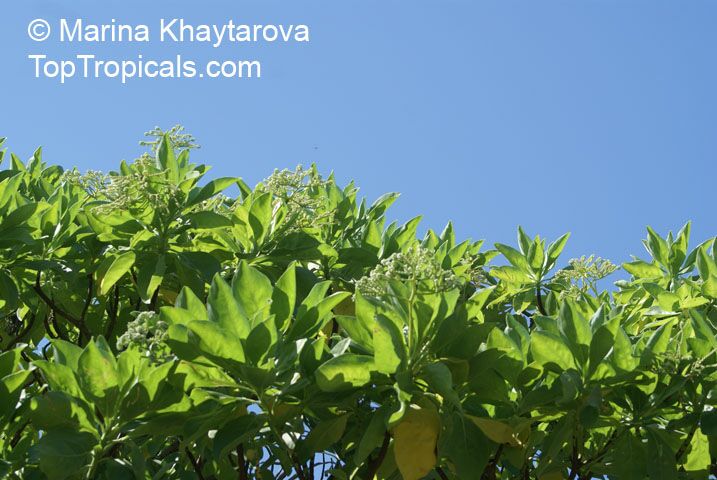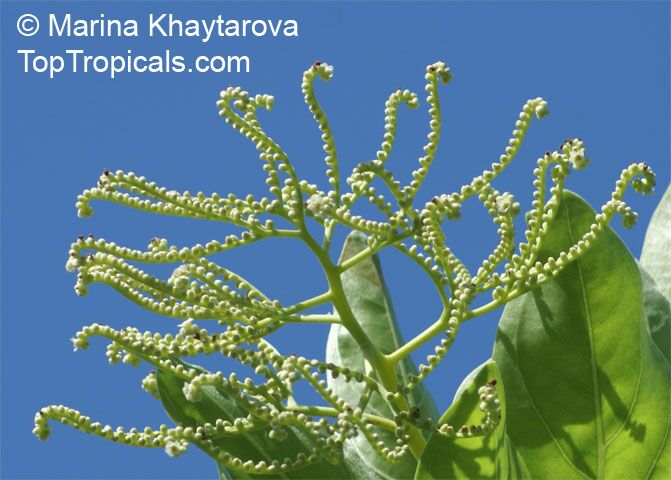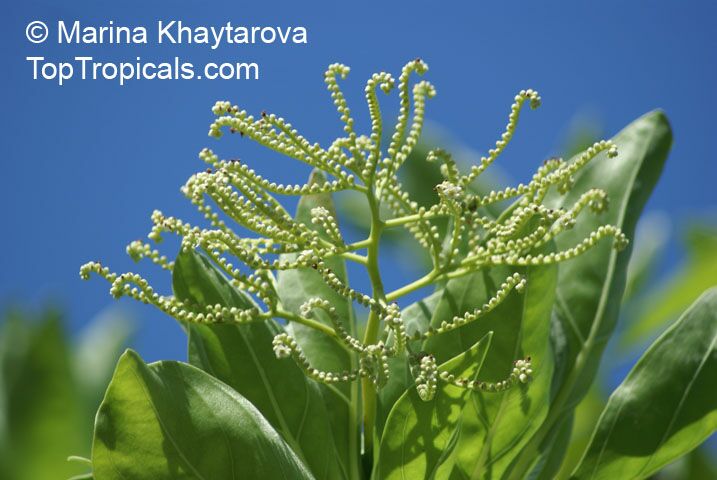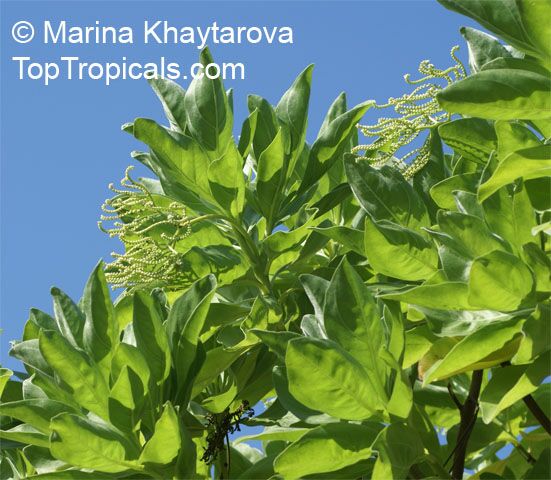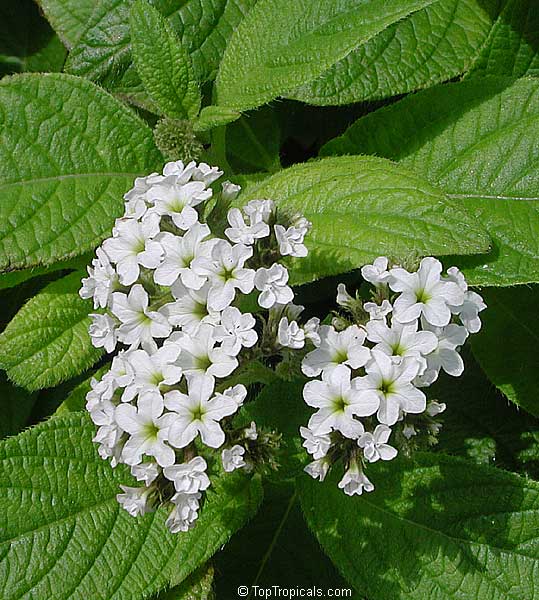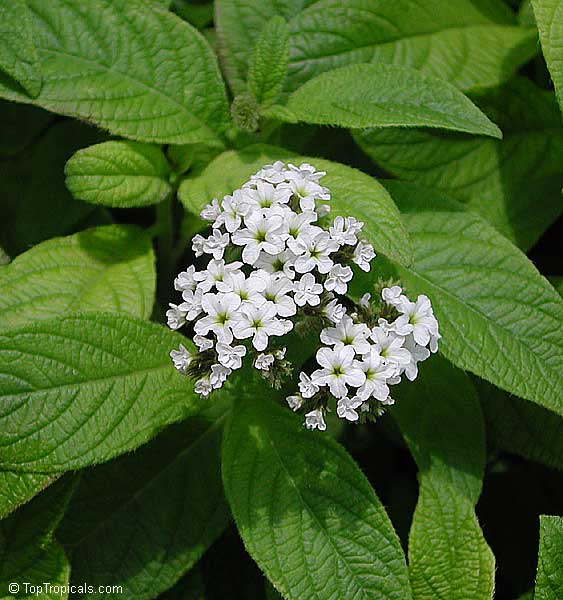Heliotrope - Plant Encyclopedia Results
Top Tropicals Plant Encyclopedia
| Number of plants found: 4 |
Botanical names: Heliotropium arborescens, Heliotropium peruviana
Common names: Turnsole, Cherry Pie, Garden Heliotrope
Family: Boraginaceae









A sweet-scented plant which is called Heliotrope because it follows the course of the sun. After opening it gradually turns from the east to the west and during the night turns again to the east to meet the rising sun. The Ancients recognized this characteristic of the plant and applied it. In homoeopathic medicine a tincture of the whole fresh plant is used for clergyman's sore throat and uterine displacement. A wonderfully exotic plant with dark green veined leaves and honey-vanilla scented deep violet flowers 4-6 inch wide in clusters above branching stems. The flowers open alternately, on the left, then the right, unfolding from coiled clusters of buds. They are strongly scented. Variety Alba has white flowers that smell like pure vanilla. The unforgettable vanilla fragrance is sensuous but not overpowering. Heliotrope's flowers are a first choice for every scented bouquet and will transform a terrace into a perfumed retreat. Prefers to be grown in part shade in warm climates. It can be brought indoors and enjoyed as a winter houseplant and placed back into the garden in the spring. See Heliotropium peruviana Alba.
Botanical names: Tournefortia argentea, Argusia argentea
Common names: Octopus Bush, Tree Heliotrope, Velvetleaf Soldierbush
Family: Boraginaceae
Origin: Polynesia, Micronesia, India, Malesia, Australia






Tournefortia argentea, also known as Octopus Bush, is a large shrub or small tree that can reach 5-10 ft tall and 10-20 ft wide, native to Tropical Asia. It is an evergreen shrub with a bushy habit and makes a useful hedge or windbreak and is often seen in coastal locations.
The foliage of Tournefortia argentea consists of soft, green leaves, woolly in texture, with a shade of silver. In the spring and summer, this plant produces white or off-white flowers that are arranged in clusters at the ends of branches.
This plant prefers full sun and well-drained soil, with moderate water requirements, and is also tolerant of coastal locations and saltwater. It is hardy in USDA Zones 9-11.
When planted in a pot, it is important to use a good-quality potting substrate and a pot large enough to accommodate the growing root system. It is also important to make sure that the soil is kept moist but not waterlogged. In cold climates, the pot should be brought inside for the winter, until the warmer spring months arrive. It may be necessary to provide a tray or saucer beneath the pot to ensure adequate drainage.
Regular pruning is also recommended to keep this plant in shape and promote new growth. This should be done in late winter or early spring. In addition, it is important to remove any yellow or dead leaves from the plant, as these can harbour pests or diseases.
Tournefortia argentea is an attractive evergreen shrub that is perfect for use in the garden or on a patio. Its attractive foliage and flowers make it a great addition to the landscape, and its salt and drought tolerance make it ideal for coastal gardens. With the right care, this beautiful octopus bush is sure to thrive and delight for many years to come.
Botanical names: Heliotropium peruviana, Heliotropium arborescens var. album
Common name: White Turnsole
Cultivar: Alba
Family: Boraginaceae








A sweet-scented plant which is called Heliotrope because it follows the course of the sun. After opening it gradually turns from the east to the west and during the night turns again to the east to meet the rising sun. The Ancients recognized this characteristic of the plant and applied it. In homoeopathic medicine a tincture of the whole fresh plant is used for clergyman's sore throat and uterine displacement. A wonderfully exotic plant with dark green veined leaves and honey-vanilla scented deep violet flowers 4-6 inch wide in clusters above branching stems. The flowers open alternately, on the left, then the right, unfolding from coiled clusters of buds. They are strongly scented. Variety Alba has white flowers that smell like pure vanilla. The unforgettable vanilla fragrance is sensuous but not overpowering. Heliotrope's flowers are a first choice for every scented bouquet and will transform a terrace into a perfumed retreat. Prefers to be grown in part shade in warm climates. It can be brought indoors and enjoyed as a winter houseplant and placed back into the garden in the spring. See Heliotropium peruviana Cherry Pie.
Use link to repeat this search:
https://toptropicals.com/cgi-bin/garden_catalog/cat.cgi?find=Heliotrope&search_op=and&keyword_op=and&language=e&number=10
&no_change_lang=1&user=tt&sale=1&first=0
